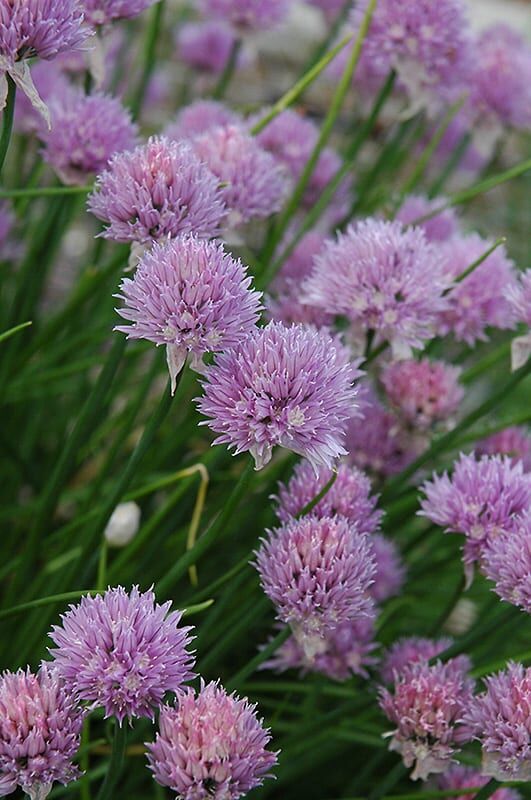Images provided by NetPS Plant Finder Tool
Chives
Edible and ornamental, this selection is great for kitchen and herb gardens, containers and window boxes; clusters of tall grass like foliage with pale purple flowers are delicious and zesty; a lovely addition to salads, sauces, or dried for seasonings
Please contact your local store for product availability.
Find a garden center near you.
Species: schoenoprasum
Other Species Names: Flowering Onion
Plant Height: 12 in.
Spread: 18 in.
Evergreen: No
Plant Form: upright spreading
Summer Foliage Color: green
Minimum Sunlight: partial shade
Maximum Sunlight: full sun
Chives has masses of beautiful balls of lightly-scented pink flowers at the ends of the stems from late spring to early summer, which are most effective when planted in groupings. Its grassy leaves remain green in color throughout the season. The fruit is not ornamentally significant.
Chives is an open herbaceous perennial with an upright spreading habit of growth. Its relatively fine texture sets it apart from other garden plants with less refined foliage. This is a high maintenance plant that will require regular care and upkeep, and should only be pruned after flowering to avoid removing any of the current season's flowers. It is a good choice for attracting butterflies to your yard, but is not particularly attractive to deer who tend to leave it alone in favor of tastier treats. Gardeners should be aware of the following characteristic(s) that may warrant special consideration; Invasive Self-Seeding Chives is recommended for the following landscape applications; General Garden Use Herb Gardens
Chives will grow to be about 12 inches tall at maturity, with a spread of 18 inches. It grows at a fast rate, and under ideal conditions can be expected to live for approximately 5 years. This plant does best in full sun to partial shade. It does best in average to evenly moist conditions, but will not tolerate standing water. It is not particular as to soil type or pH, and is able to handle environmental salt. It is highly tolerant of urban pollution and will even thrive in inner city environments. This species is not originally from North America. It can be propagated by division.
